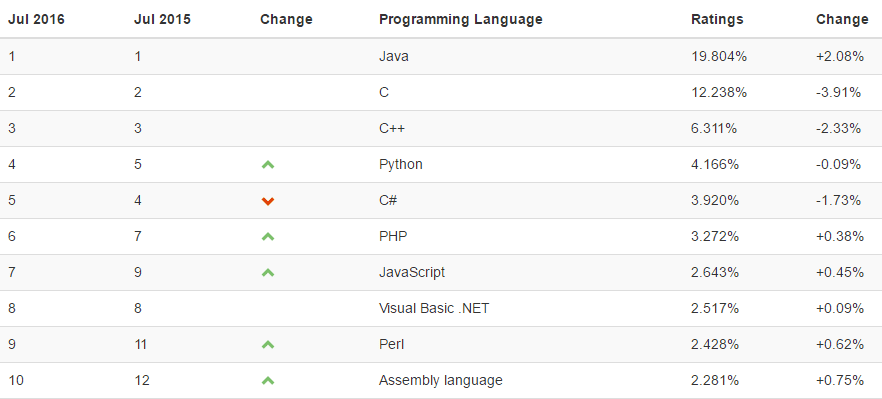Java got an approval rating of 19.804 % followed by C with 12.238 % while C++ came in third at 6.311 %. Python and C# continue to hang in there with a slight downtick in their popularity. Java’s popularity rose at 2.08 percent while C and C++ have a little worry as their popularity shrank at -3.91 % and -2.33 %respectively. PHP, the programming language of choice among web applications developers made it to the top 5, while C# slid from the top 5. The biggest surprise however, is the jump in popularity of Assembly. Assembly, a low-level programming language has broken into top 10 for the first time. It might come as a surprise that the lowest level programming language that exists has re-entered the TIOBE index top 10. Why would anyone write code at such a low level, being far less productive if compared to using any other programming language and being vulnerable to all kinds of programming mistakes? The only satisfactory answer is machine learning and Internet of Things use Assembly language. For the uninitiated, Assembly programming language or asm, is a low-level programming language for a computer, or other programmable device, in which there is a very strong (generally one-to-one) correspondence between the language and the architecture’s machine code instructions. Assembly language is converted into executable machine code by a utility program referred to as an assembler. The conversion process is referred to as assembly, or assembling the source code. Assembly time is the computational step where an assembler is run. The only reasonable explanation for this is that the number of very small devices that are only able to run assembly code is increasing. Even your toothbrush or coffee machine are running assembly code nowadays. Another reason for adoption is performance. If performance is key, nobody can beat assembly code. Looks like machine learning and Internet of Things is a history in making.
